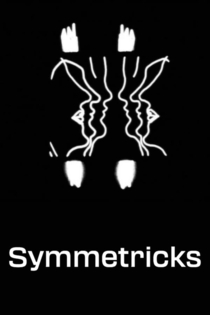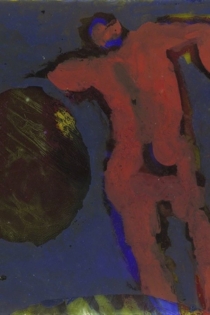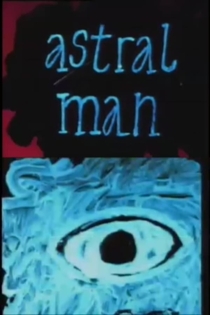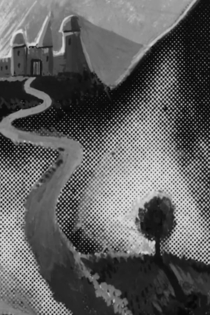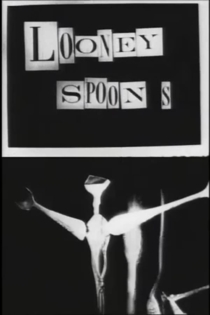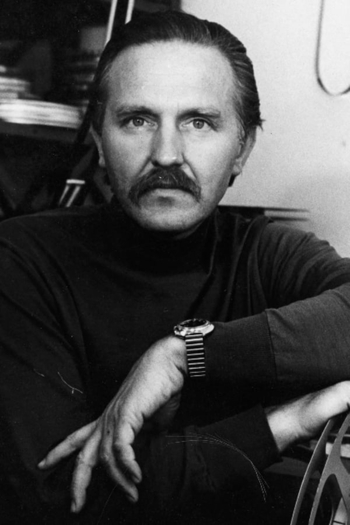
Stan VanDerBeek
1927 - 1984His earliest period (1955-1965) is marked by his animated painting and collage films which the artist and critic Daryl Chin regarded as having an “enormous vitality, bounding inventiveness and incendiary wit which was shared by such other collagists as Robert Breer, Bruce Conner, Dick Preston.” Films such as Science Friction (1959, 10’), Breathdeath (1963, 15’), A la Mode (1959, 7’) and Achoo Mr. Kerrooschev (1960, 2’) are from this period.
In the 1960’s, in the context of his expanded cinema research, Vanderbeek started his audacious project of the “Movie Drome” theater, a space that allowed him to create an appropriate environment for his synesthetic works, which included film, performance and dance among other disciplines. The filmmaker spent about 10 years developing this project, which consisted of a huge dome that surrounded the audience and engulfed them in the images projected all around them.
From the mid-1960’s, Vanderbeek ‘s appetite for exploring new technologies increased and tools such as video played a major part in the filmmaker’s work. This can be seen in his computer-animated films from this period such as Symmetricks (1972, 6’) and the Poemfield series of 8 computer generated animations (1966-1971). His work with computers and experiments with holograms reflected his desire to use the most complex technology to get as close as possible to the functioning of the human nervous system.
In addition to his creative work in the fields of film and video art, Vanderbeek was a faculty member and artist-in-residence at a number of major universities. He died in 1984.
Reality's Invisible
Robert Fulton
Rudolf Arnheim, Stan Brakhage
Fulton made the film during his brief time at Harvard, where he had been invited to teach by Robert Gardner, his friend and collaborator (Fulton would later serve as a cinematographer on Gardner’s 1981 documentary Deep Hearts, among others). Reality’s Invisible could be described as a portrait of the Carpenter Center, yet it is a portrait of an extremely idiosyncratic and distinctive sort. Fulton moves us through the concrete space of the Center’s Le Corbusier-designed building—the only structure by the architect in North America—but, more centrally, presents us footage of students making and discussing their work alongside figures like Gardner, theorist Rudolf Arnheim, artist Stan Vanderbeek, filmmaker Stan Brakhage, and graphic designer Toshi Katayama.
Reality's Invisible

Breathdeath
Stan VanDerBeek
A surrealistic fantasy based on the 15th century woodcuts of the dance of the dead. A film experiment that deals with the photoreality and the surrealism of life. A collage-animation that cuts up photos and newsreel film and reassembles them, producing an image that is a mixture of unexplainable fact (Why is Harpo Marx playing a harp in the middle of a battlefield?) with inexplicable act (Why is there a battlefield?). It is a black comedy, a fantasy that mocks death ... a parabolic parable.
Breathdeath

Poem Field No. 2
Stan VanDerBeek
To create his “Poemfields” (1965-71) series, VanDerBeek worked closely with computer scientist Ken Knowlton and the staff at Bell Labs. Each “Poemfield” was adapted from poems by VanDerBeek, programmed on an IBM 7094 computer in black and white using a custom language known as BEFLIX, and colored after the fact by artists Robert Brown and Frank Olvey. Poemfield No. 2 features a soundtrack by jazz percussionist Paul Motian, known for his collaborations with Bill Evans.
Poem Field No. 2

Science Friction
Stan VanDerBeek
This film uses stop motion animation of still photographs to convey images of politics and science in the nuclear era. The advancement of science allows man to do things he never would have been able to do without, for good or bad. Politicians are either behind the scenes manipulating those scientists or are using that science for their own goals, primarily in the space race. Everyday items and people are projected upwards - many in the form of rockets - followed by iconic structures, such as the Empire State Building, the US Capitol, the Washington Monument, the Eiffel Tower and the Kremlin, being rocketed skyward as visual representations of that race into space.
Science Friction

Symmetricks
Stan VanDerBeek, Wade Shaw
Against a black background and a pulsating beat matching white symmetrical geometric flashes around a central orb, white lines are drawn in mirror images vertical to each other. The images created are generally a myriad of faces in silhouette. Those silhouettes however often take on abstract forms in their entirety.
Symmetricks
